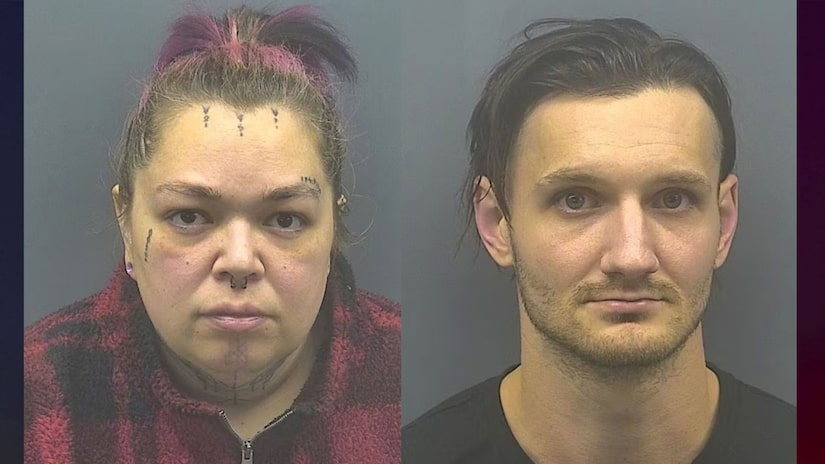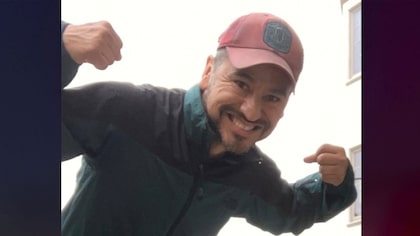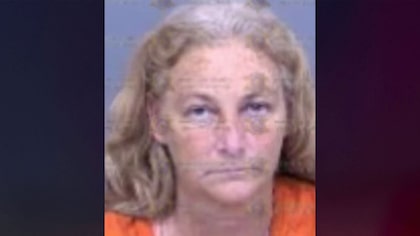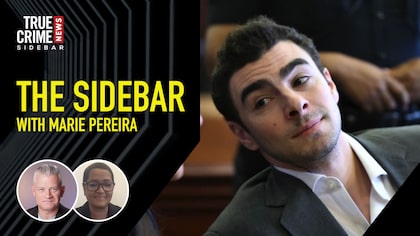Exclusive: Connecticut's 'most notorious serial killer' discusses crimes, motivation with Crime Watch Daily
01/05/2018 2:11 pm PST
UPDATE December 24, 2018:
Convicted serial killer William Devin Howell, imprisoned in Connecticut, has been accused of assaulting a fellow inmate, WTIC reports.
A Correction Department spokesman said Howell punched Robert King, who is serving time for his involvement in a sex-trafficking ring that victimized young intellectually disabled and mentally ill men. King suffered a broken nose and a damaged eye socket.
Howell was charged with third-degree assault and disorderly conduct. King was moved to another prison.
January 5, 2018:
A rare glimpse inside the mind of a serial killer: A self-confessed monster who left a trail of bodies in Connecticut talks for the first time on television about his horrible crimes.
The bodies are piling up: Seven dead in six months. And now the murderer responsible, Connecticut's most prolific serial killer, William Devin Howell, is spilling his secrets.
It's late summer in 2007 when a hunter makes his way into the central Connecticut woods. The brush and weeds are thick, but there's an open patch just ahead, and something has been unearthed.
"A hunter was behind here looking for a place to hunt and found the first skull," said author and attorney Anne K. Howard.
But it was not the last. When New Britain Police arrive on scene, they quickly uncover what appears to be a mass grave. Buried within are the mutilated remains of three women.
"They were somebody's loved one. They were somebody's daughter, somebody's sister," said New Britain Police Chief James Wardwell.
The first body to be identified is that of 53-year-old Diane Cusack.
Jane Doe Number 2 is found to be another local girl, 23-year-old Joyvaline Martinez, just weeks away from her 24th birthday when she disappeared.
The third and last of the remains to be identified are those of 40-year-old mother Mary Jane Menard.
As it turns out, all three women disappeared during the same six-month time span in 2003.
According to a witness, Mary Jane Menard was last seen getting into a "black or blue van" being driven by a man named "Bill." But that appears to be as far as the investigation got. And for years, the case seems to live on only in the occasional article online. That's when local attorney turned true-crime writer Anne Howard stumbles -- or rather, clicks -- her way into the story.
"I was researching online about some cold-case murders not far from where I lived," Howard tells Crime Watch Daily. "And every time I researched this story about bodies being found behind a strip mall in New Britain, Connecticut, it kept coming up on my news feed."
Anne Howard can't help but wonder: "Who is this monster who has yet to be arrested for the murders of these people being found behind a suburban strip mall on a busy roadway not far from where I live?" said Howard.
"I started a blog about it," said Howard. "And I started researching cold cases and unsolved murders. The blog evolved into writing solely about this case."
While digging into the story on her blog entitled Serial Murders in Connecticut, Howard starts to wonder if those three bodies are the only bodies -- especially when another local crime catches her eye.
It's the disappearance of 33-year-old Nilsa Arizmendi from the neighboring town of Wethersfield, Connecticut. And it happened during the exact same time period that the other three women disappeared. And that's not the only similarity.
"Her boyfriend told police that he last saw her getting into a van," Connecticut State's Attorney Brian Preleski announced in a news conference.
A dark blue van, to be precise. But unlike with the other women, Arizmendi's case has been solved.
"Information was developed with respect to a van matching the description given by Nilsa's boyfriend. That van was registered to Dorothy Holcomb," said Preleski. "It was learned that Ms. Holcomb's boyfriend was named William Devin Howell."
And according to his girlfriend's parents, Howell had recently purchased the van from them for $400.
"Processing the van revealed a bloodstain on the vertical back cushion of the middle seat of the van," said Preleski.
Police send it to the state crime lab for testing, and when the results come back:
"DNA of Arizmendi's that was found in his van," said Anne Howard.
William Howell was arrested in connection to Nilsa Arizmendi's disappearance. Even though cops don't have a body, Howell takes a plea deal for manslaughter and is sentenced to 15 years in prison.
But then, that was before police found those other bodies.
"Red flags are all over it," said Howard.
Police discovered one skull after another behind a Connecticut strip mall -- all the victims murdered. The prime suspect, William Devin Howell, ran a lawn-cutting business out of his van.
The mutilated bodies of three women were discovered buried in the woods behind a strip mall in New Britain, Connecticut in August 2007.
At the same time, a man by the name of William Howell is serving out a prison sentence in connection to the disappearance of 33-year-old Nilsa Arizmendi. Howell is suddenly named as a suspect in the other murders.
"Howell did confess his crimes," said attorney and author Anne K. Howard.
Prosecutors say that while in prison, Howell confessed to his cellmate Jonathan Mills. According to Mills, Howell told him a terrifying tale about his alter ego "The Sick Ripper," who picked up women in what he called his "murder mobile," and buried them in the woods behind a mall.
When cops get word of this killer confession:
"Additional human remains were located and recovered," said New Britain Police Chief James Wardwell in a news conference.
Tragically, investigators unearth four more bodies. That brings the body count to seven: six women and one man.
Soon, the coroner identifies the additional victims as 29-year-old Melanie Ruth Camilini, 44-year-old Danny Lee Whistnant, 26-year-old Marilyn Mendez Gonzalez, and 33-year-old Nilsa Arizmendi.
"The prosecutors had six out of seven DNA samples of the victims in his van," said Anne Howard.
William Devin Howell was charged with multiple capital felony murders -- it's an unprecedented crime, giving him an unprecedented title.
"The most notorious serial killer in the state of Connecticut's history," said defense attorney William Paetzold.
Then in a stunning turn of events:
"William Howell decided that he didn't want a trial, that he was prepared to plead guilty," said defense attorney Jeff Kestenband.
Howell admits to the savage murders in the back of his "murder mobile." While he awaits sentencing, Anne K. Howard, who's been blogging about the case, reaches out to the murderer.
"And I told him I was interested in writing a book about him, and much to my surprise, two weeks later William Devin Howell wrote back to me," Howard tells Crime Watch Daily.
Over the next several months, the serial killer and the attorney turned author exchange numerous letters, which the killer gives exclusively to Howard for her book.
"I was introduced to a man that the public has not seen," said Anne K. Howard.
In the letters, Howell describes his grisly killing spree that took the lives of seven people in just six short months.
"This is the location, in the corner of the McDonald's parking lot in New Britain, where the serial killer William Devin Howell raped and strangled three of his victims," Howard tells Crime Watch Daily.
"He would duct-tape their mouths so that no one would hear them making any noises," said Howard. "He was careful to park in remote enough locations, even though he would be in a parking lot that had public access, and perhaps even had some cars parked, they were almost at least 50 feet away."
About Nilsa Arizmendi, he writes: "She wanted a ride into Hartford ... I grabbed her ... raped her throughout the night and into the day ... I killed her ... and threw her down the hill."
"It was at this location that he would drive his van up, he would slide open the side door, the body of each of his victims would be wrapped in plastic trash bags, and then very quickly thrown them over this steep embankment into the ravine below," said Howard.
Concerning Howell's first victim Melanie Camilini, he writes: "I grabbed her by the throat ... I raised a hammer and told her ... 'All I want is sex, if you don't give me any trouble you won't get hurt.'"
But that wasn't true. He hits her with a hammer and strangles her to death. And that's not all.
"At the time, he was living in his van, so he slept beside her body for two weeks," said Howard.
According to police affidavits, he nicknamed the corpse "Baby."
Then he writes about Marilyn Mendez Gonzalez, and how after raping her through the night, he: "Got us some fast-food breakfast."
It was her final meal before Howell strangled her to death. It's a strange ritual Howell admits to doing with most of his victims, writing: "I'd go through the Micky D's drive thru with a half naked tied up [----] in the back and told them if they made a sound it would be their last. None of them did."
They are acts that can only be described as pure evil. But as we were about to find out, the man who committed them is not so easily defined.
William Devin Howell admits to ending the lives of seven people in his "murder mobile" and stashing their mutilated bodies behind a busy strip mall. Now, in his first national TV interview, we're talking to the man called Connecticut's most prolific serial killer.
CWD: "I know you were reluctant to talk to the media at first. What changed your mind?"
William Devin Howell: "Well, I'm still not real excited to talk to y'all and I'd rather not be doing it at all, but I did this as a favor to Anne."
Regardless of his reasons for talking, it was an opportunity to get inside the mind of the man who once called himself "The Sick Ripper."
Howell: "Everybody wants to know 'Why, why, why, why?' And the truth is I don't know why, you know what I mean?"
"I was raised by a good family in a good home. I was never abused, I was never molested. I didn't kill animals when I was a little kid, or anything like that. So I just don't fit the mold at all that everybody tries to put serial killers in, you know what I mean? So why I grew up to commit these crimes, I have no idea, other than the only thing I can say is for my own selfish reasons."
So then where did it all go wrong? How did Howell go from happy kid to killer?
Howell: "I started screwing up my life. Through drinking and I served half of the '90s in jail or prison in Virginia, and it was all for driving a car without a license. And that instilled a lot of bitterness in me, you know what I mean?"
CWD: "You were angry?"
Howell: "Yeah, I was angry inside."
And that's when, he says, the sick thoughts started creeping in.
Howell: "It was something that I had fantasized about for a few years."
CWD: "So you began fantasizing about killing people in Virginia in the '90s."
Howell: "I didn't start, I wasn't -- the fantasy wasn't about killing somebody. I killed them to try to cover up my crime. The fantasy was about just raping."
CWD: "What happened? What made you cross the line?"
Howell: "I don't know. I just decided to act on my impulses and I'd been out drinking a little bit and I was pissed off at my girlfriend at the time, and I don't know, it just, something made me say 'Well, tonight's the night, I'm gonna cross the line, I'm gonna do it, I'm gonna make my fantasy come true.'"
And once he crossed that line, he says horror became habit.
Howell: "It's not like it was a beast that was driving me to commit these crimes. This may make me even more sinister, but it was something that I like chose to do, I didn't have something driving me that I couldn't control, you know what I mean, or anything like that. I chose, I chose to do what I did, and I just chose not to care."
But he says that was then, and that today he does feel remorse for what he's done, for the pain he's brought to his victims' loved ones.
Howell: "I would hear them sobbing in the courtroom and it just tore me apart."
CWD: "You're so concerned about the victim families now. You have a heart, as you should, for the victims' families, their feelings, and empathy, now. Why didn't you think about the family members of the people who you killed on those nights and days?"
Howell: "I have no excuse. What can I say? I was selfish. I try and be a good person. I try and live my life with integrity. And then I went and committed crimes that were the total opposite of how I try and live and conduct myself. I am very remorseful for my actions and if I could go back and take it all back, I would. If I could give my life to bring theirs back, I would."
Crime Watch Daily was at Howell's sentencing just a few weeks before and caught up with a family friend of Mary Jane Menard's to ask what he thought of Howell's contrition when he stood up and addressed the victims' families.
"Sounded like he meant what he said, but like apologizing sincerely about them, but what he did was like very bad. I couldn't imagine like going through something like that," said Juan Cardona.
Did you feel sympathy for him?
"No, not really, I wanted to choke him out, actually," said Cardona.
CWD: "That day when we were in court, why did you plead guilty?"
Howell: "'Cause I'm guilty. I didn't want to put the families through it. I felt like if I went to trial I would've been found guilty anyways, so why put the families through it? Why put the taxpayers through it?"
In fact, he says if he had his way he would've gotten a lot worse than the 360-year prison sentence he received.
Howell: "I feel like the just sentence would've been the death penalty."
CWD: "So you would rather have gotten lethal injection versus life in prison? You want to die?"
Howell: "I would rather have the lethal injection. When I committed the crime, that was the sentence that I expected to serve."
But William Devin Howell also admits that if he hadn't been caught, his killing spree very well may have continued.
Howell: "Probably. There would have probably been more victims."
So then, did Howell have genuine remorse, or was it just that he'd been caught? We decided to ask him some specifics about his victims -- and that's when the tone of our conversation suddenly shifted.
CWD: "Do you remember the names of any of your victims?"
Howell: "I know who they all are, I'm not going to get into that."
But the families deserved to know, so I pushed on.
CWD: "So when you hear the name Mary J. Menard, do you remember the person who it was that night?"
Howell: "I'm really tired of talking about this. I don't like talking about it at all anyway, you know what I mean, and you just, you won't let it go. I've said what I wanted to say about that subject. If you can't find something else to talk about I'd rather just end the conversation."
And when we tried to press one more time, that's exactly what he did.
CWD: "What about Nilsa?"
Howell: "I'm telling you, how many times do I have to -- you know what, I'm done. Ask Anne. Read the book."
Unfortunately, our call ended before we got to ask one crucial question: Did Howell's six-month killing spree really stop with those seven unfortunate souls, or are there others?
Anne K. Howard, the woman who literally wrote the book on William Devin Howell, believes there could be.
"A detective has asked me to sit down with the New Britain Serial Killer Task Force and discuss the important possibility that there may be more victims out there," said Howard.
In fact, in a chilling new revelation, police are now saying they've found several videotapes in the back of Howell's so-called "murder mobile" that show other women who have yet to be identified.
Take a good look at these grainy screenshots. Investigators say they need your help putting names to these faces, identifying whether or not they too fell victim to Connecticut's most prolific serial killer. If you have information about the case, contact the New Britain Police Department at (860) 826-3000.








